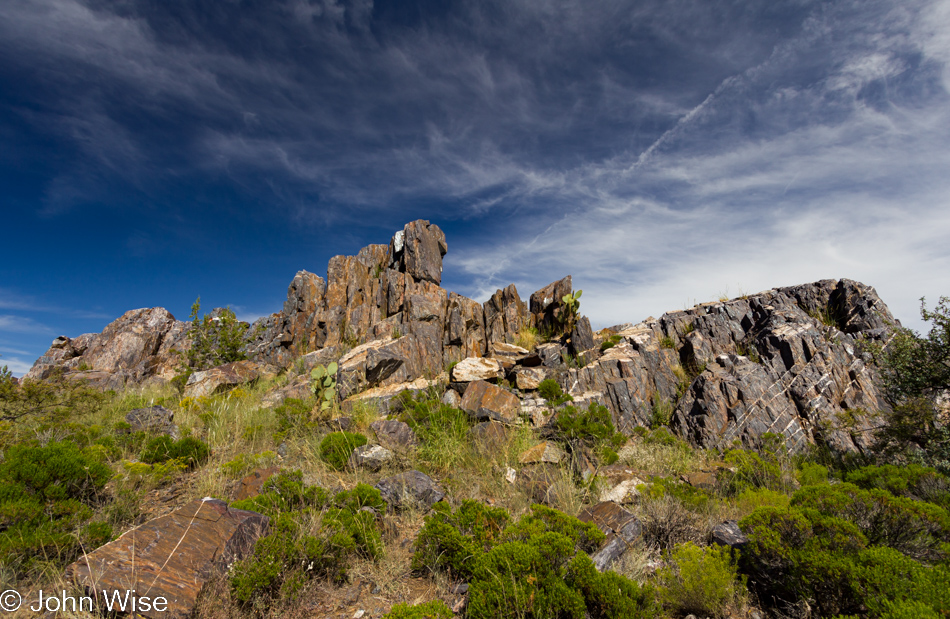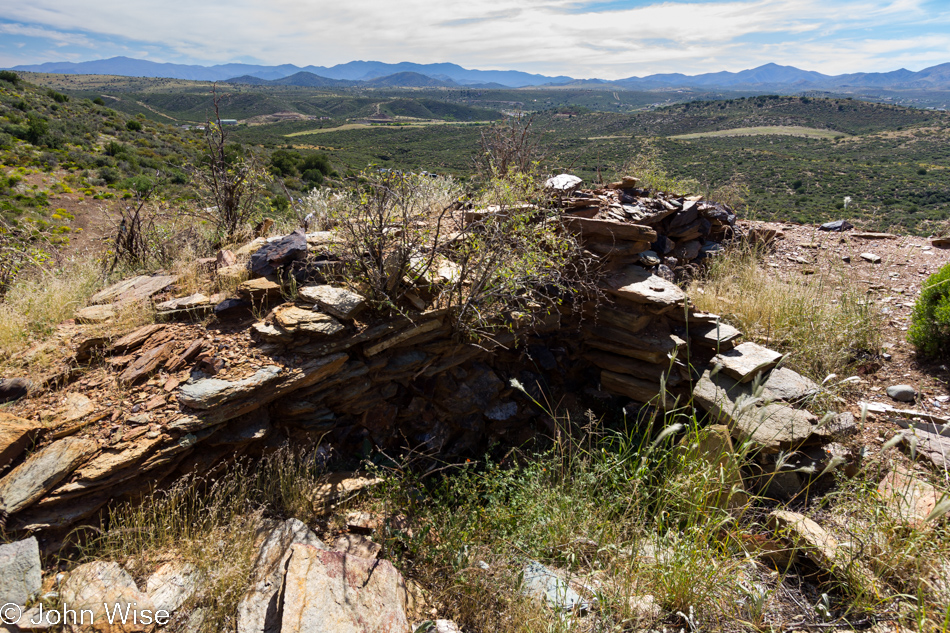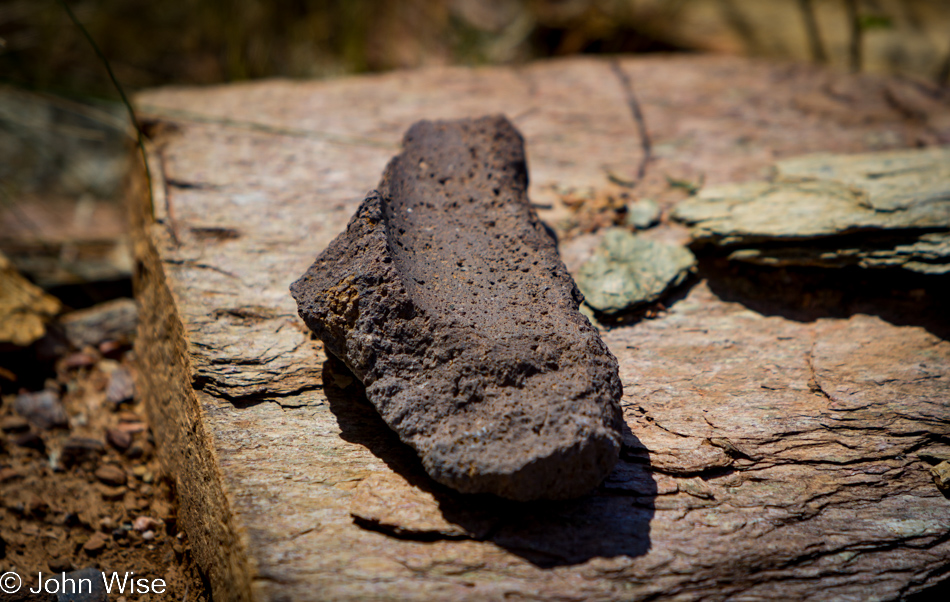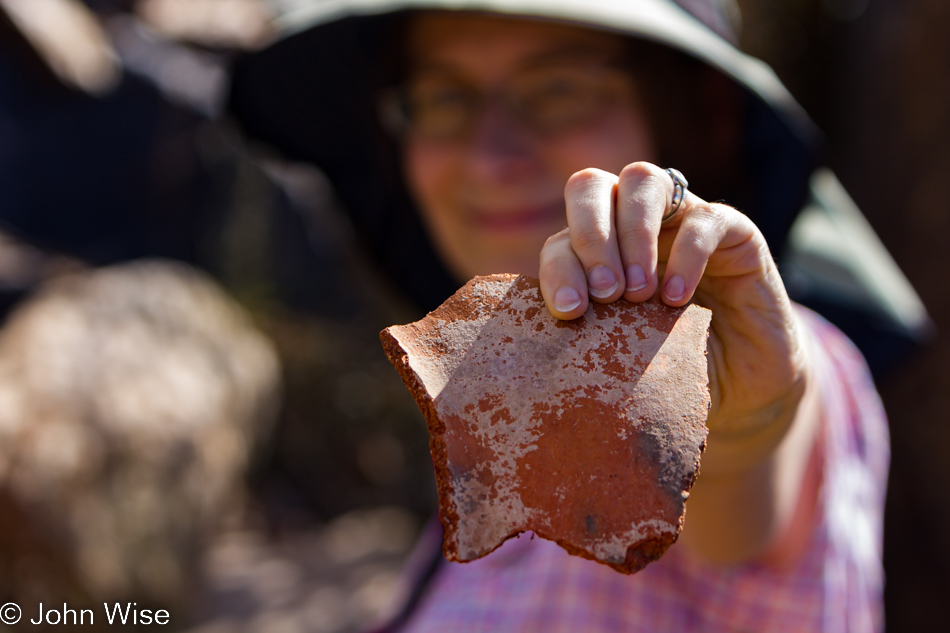
Today was the annual meeting of the Friends of Agua Fria National Monument, and as new members, Caroline and I were invited to attend. Over the years, on our travels across America, we, on occasion run across these “Friends of” groups. From the events they have scheduled and the programs they arrange, it seemed to me that Caroline and I were missing out on something. So when I learned of the Agua Fria group, we became members. This year’s annual meeting took place in a restaurant in Mayer, Arizona.

We arrived at 8:00 for the coffee and breakfast part of the meeting. The meeting itself didn’t begin until 9:00. First order of business was the budget – which proved mildly contentious. Next up was info about the voting for a new board of directors. A presentation by a local grad student studying “race track” markings near native settlements took us up to lunch, during which a number of prizes were raffled off. Afterward, the election results were announced along with the winners of the fundraising silent auction. Then, finally, it was time for the part Caroline and I were really looking forward to.

Today’s activities included a local hike. Our destination was a Native American archaeological site on a nearby hillside. About a dozen of the 60 or so meeting participants joined our guide for the drive over a very rough road and short yet steep trail up the hill. Our Kia was the last car that I would dare take up this rutted, narrow sliver of a road, but the gentleman leading the hike had no problem letting us take over his back seat. A retired guy from Wisconsin nabbed the front seat. Once the vehicles were parked, we saw remnants of pit houses and a few pottery shards. But that was nothing in comparison to what we found on the hilltop.

Crumbling stone walls, hundreds of pottery shards, a fragment from a broken metate, and more than one broken mano were scattered about, and the view from up here was commanding. The tour guide and the other attendees wanted to believe this was some kind of defensive position, but I don’t buy that; I think that, just like us, someone really loved the view. Considering that a few hundred years ago, the native population was quite small and scattered about, if a dozen Native Americans were trekking over the surrounding desert, who would risk losing 3 or 4 members of the group, possibly destroying its viability to survive? My interpretation has a bunch of folks making food with the mano metates, barbecuing, drinking from the pottery, catching a tan by day, and being dazzled by the stars at night.